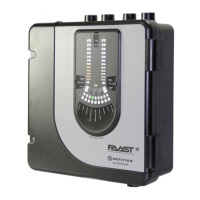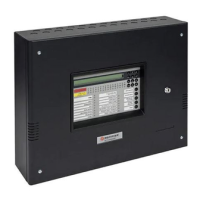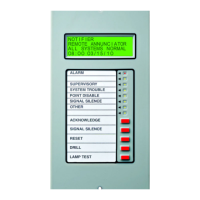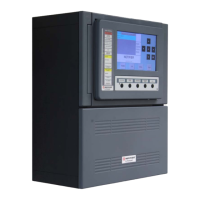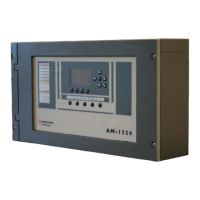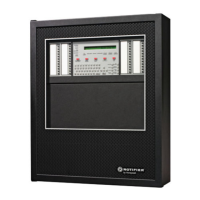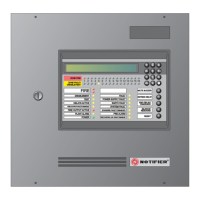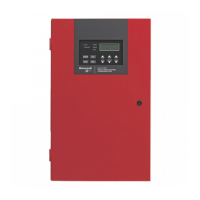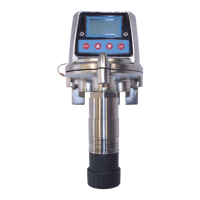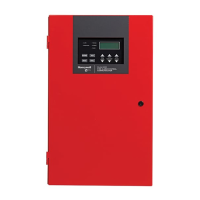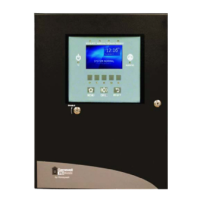128 FireWarden 100-2/E — P/N 52778:A 11/04/2005
Operating Instructions Alarm Operation
If multiple trouble conditions exist in the system, they will be automatically scrolled on the LCD
display at a three second rate. If a combination of alarms, troubles and/or supervisory conditions
simultaneously occur in the system, only the alarms are scrolled on the display.
4.5 Alarm Operation
Alarm operation is similar to trouble operation with the following differences:
• The piezo sounder produces a steady output as opposed to a pulsed output
• The Fire Alarm LED flashes 1 second On and 1 second Off
• The LCD displays Alarm along with the device name, type, address, adjective/noun,
associated zones and time/date
• Communicate the alarm to the Central Station
• Alarms latch and are not allowed to clear automatically
• Alarms activate software zones if so programmed
• Timers for Silence Inhibit, Autosilence and Trouble Reminder are started
• Alarms activate the general alarm relay and general alarm zone Z00
• The trouble relay is not activated
• Store event in history buffer
• Terminate upload or download communications
A typical alarm display would be as illustrated below:
Note that the device type, which in this example is PULL STATION, can be any other
programmable alarm type.
The information displayed in the above example provides the following information:
• First line in display:
• The type of event; in this example ALARM indicating an alarm condition
• Device type identifier; in this example, PULL STATION indicates a manual pull box. Other
device type identifiers which can be displayed include SMOKE (ION) for Ionization
Detector, HEAT for Heat Detector, CONTROL for Control Module and MONITOR for
Monitor Module, PULL STATION for a manual pull box, etc. Refer to “Edit Detector” on
page 46, “Edit Module Screen for Monitor Module” on page 56 and “Edit Module Screen
for Control Modules” on page 65 for information on additional device types.
• Second line in display:
• <ADJ>; refers to the user programmed adjective descriptor from library list resident in the
control panel or custom entry via PC.
• <NOUN>; refers to the user programmed noun descriptor from library list resident in the
control panel or custom entry via PC.
• Third line in display: Z000 indicates the zone programmed to this device which, in this
example, is general alarm Zone 000. Note that a single device can be programmed to five
different zones but only the first zone will be displayed.
• Fourth line in display:
• Time; the current time in this example is 10:00A which represents 10:00 AM
• Date; the current month, day and year in this example is 01 for January, 08 for the 8th day of
the month and 06 for the year 2006
ALARM PULL STATION
<ADJ> <NOUN>
Z000
10:00A 010806 1M001

